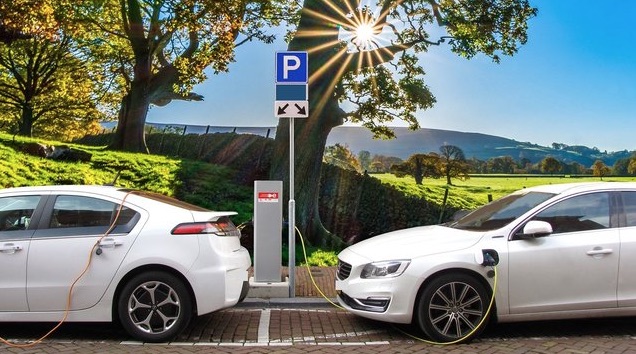
EVs: Electric vehicles are a major part of the state’s future plans for transportation.
The House Transportation Committee on Friday discussed how travel around Vermont is going to change so the state can meet its ambitious mandates regarding carbon emission reduction.
According to the text of H.101 — “An act relating to transportation initiatives to reduce carbon emissions” — the Agency of Transportation must present a written plan on how to fund Vermont’s efforts “to reduce greenhouse gas emissions and increase access to higher-efficiency, lower-cost transportation options.”
Also, lawmakers envision transforming the transportation sector to meet the state’s emissions reduction requirements and “ensure that there is an environmentally clean, efficient, multimodal system that will have economic, environmental, equity, and public health benefits for all Vermonters.”
Communities could be asked to come up with specific measurements of how much their transportation plans reduce carbon emissions. For example, the bill calls for “a quantitative estimation of how effective the relevant elements of the proposed Transportation Program for the upcoming fiscal year will be in reducing greenhouse gas emissions and a quantitative estimation, based on the emission projections published in the Greenhouse Gas Inventory, if available, of how much more the greenhouse gas emissions from the transportation sector need to be reduced for the State to achieve its emissions reductions requirements.”
The chair of the committee, Rep. Sara Coffey, D-Guilford, said that one of the purposes of this bill is to examine financial sources to support this massive policy overhaul as required per the state’s climate action plan.
“We are thinking about raising revenue to address our future climate needs that are outlined in the climate action plan,” she said.
Michele Boomhower speaks on equity
Michele Boomhower, the director of Policy, Planning, and Intermodal Development Division for the Agency of Transportation, was the one to engage the committee and explain what these state-mandated carbon emission reduction efforts would look like for Vermont.
“The Comprehensive Energy Plan has been codified in statute as a reference point,” she said.
The social justice buzzphrase “equity” continues to dominate all facets of Vermont’s public policy and its transportation policies will be no exception.
“We would have statutory recommendations for policy that needs to be adjusted to reflect the equity framework outcomes, we would have potentially outreach and communications in education, elements in terms of our communications plan that would have to be edited to reflect the outcomes of the equity framework,” Boomhower said. “… There’s this whole world of equity that we are sort of getting our hear around.”
The committee meeting can be viewed online here.
Michael Bielawski is a reporter for True North. Send him news tips at bielawski82@yahoo.com and follow him on Twitter @TrueNorthMikeB.


